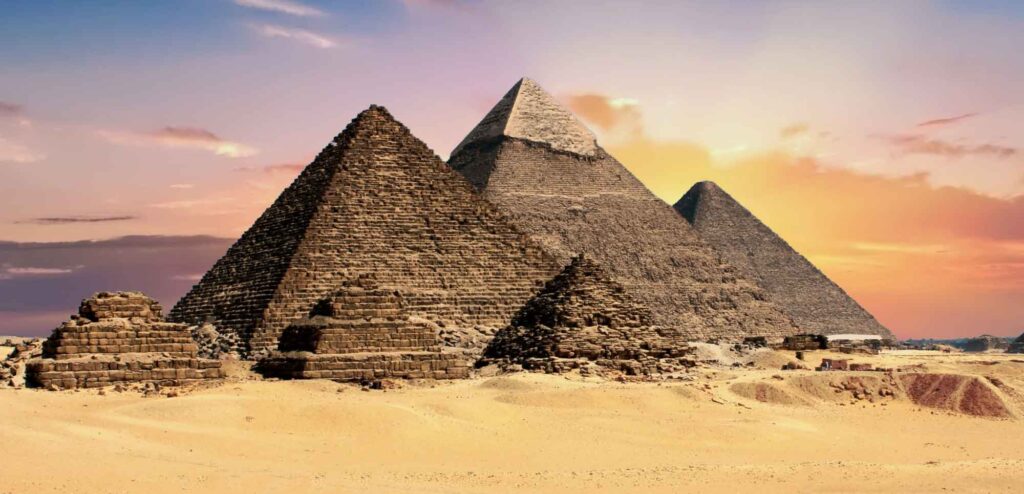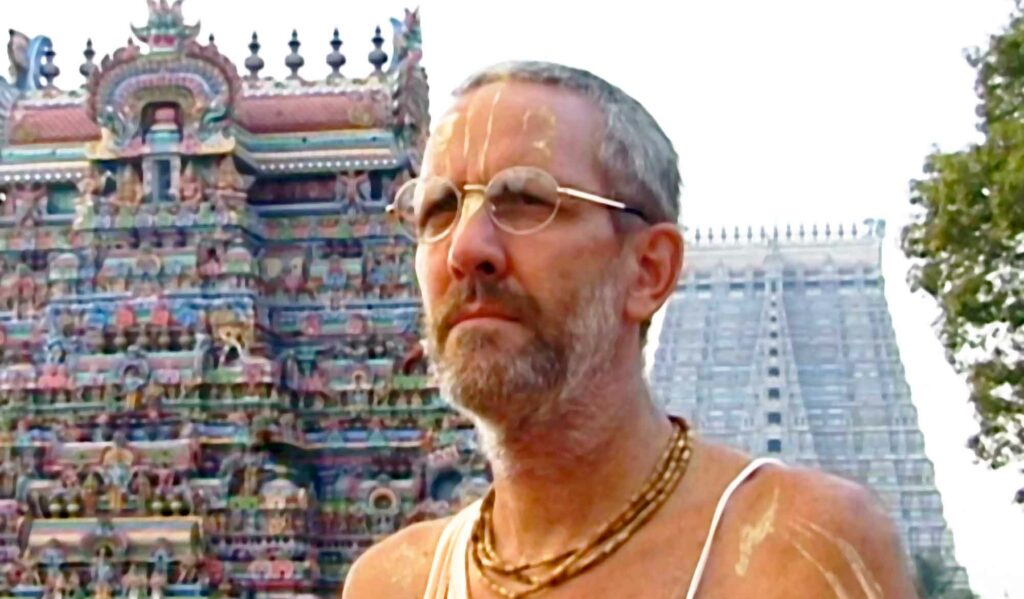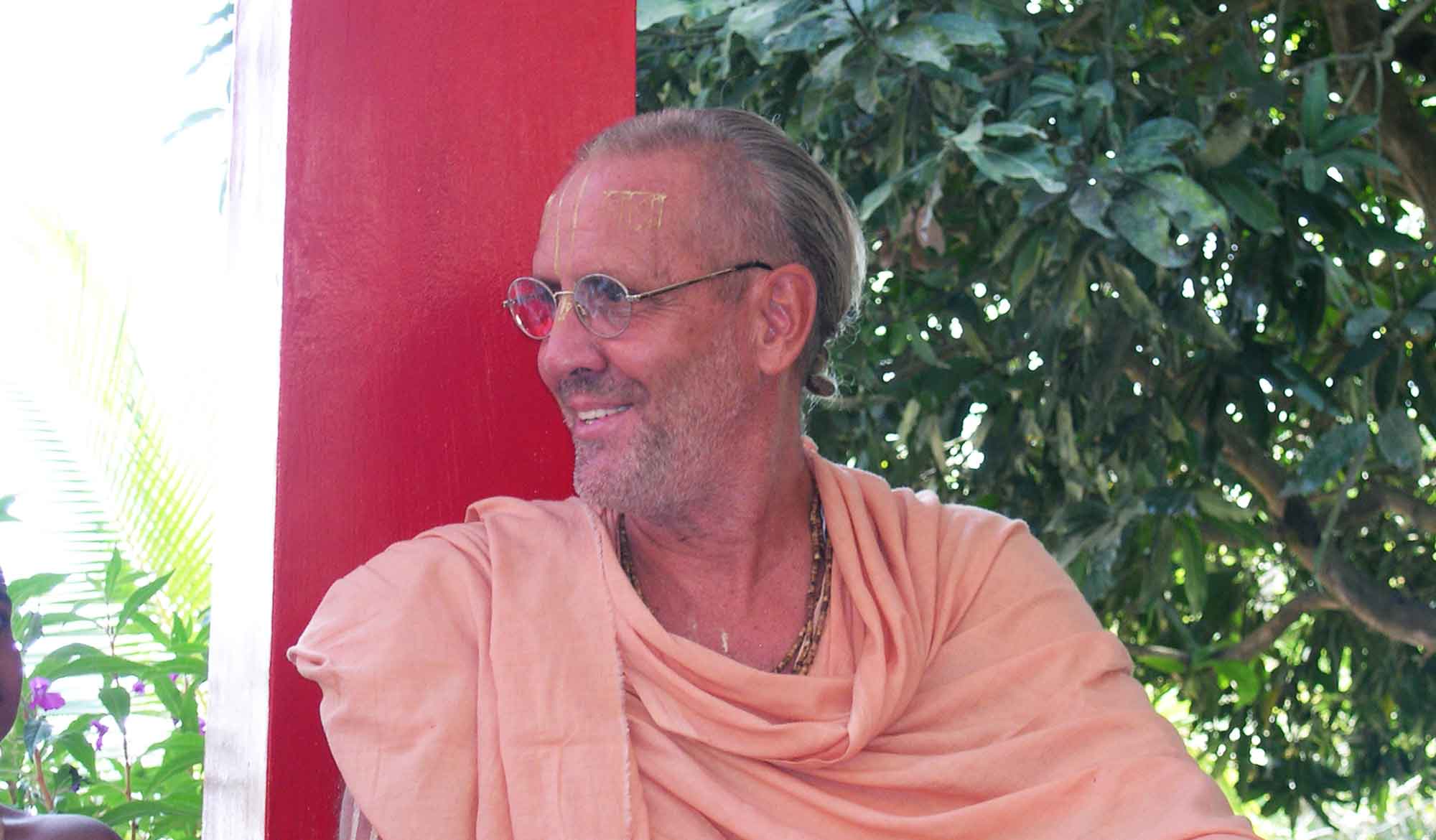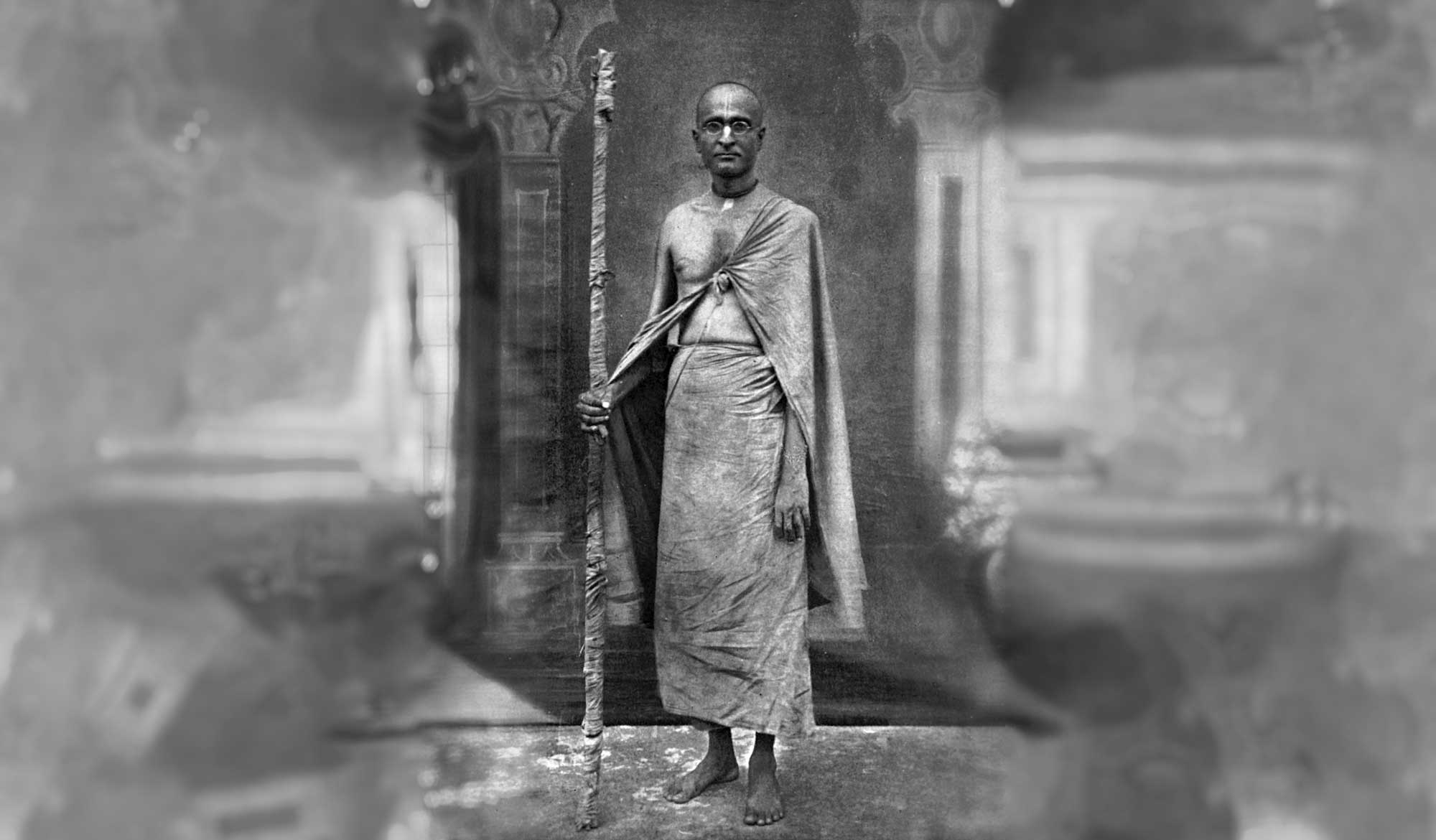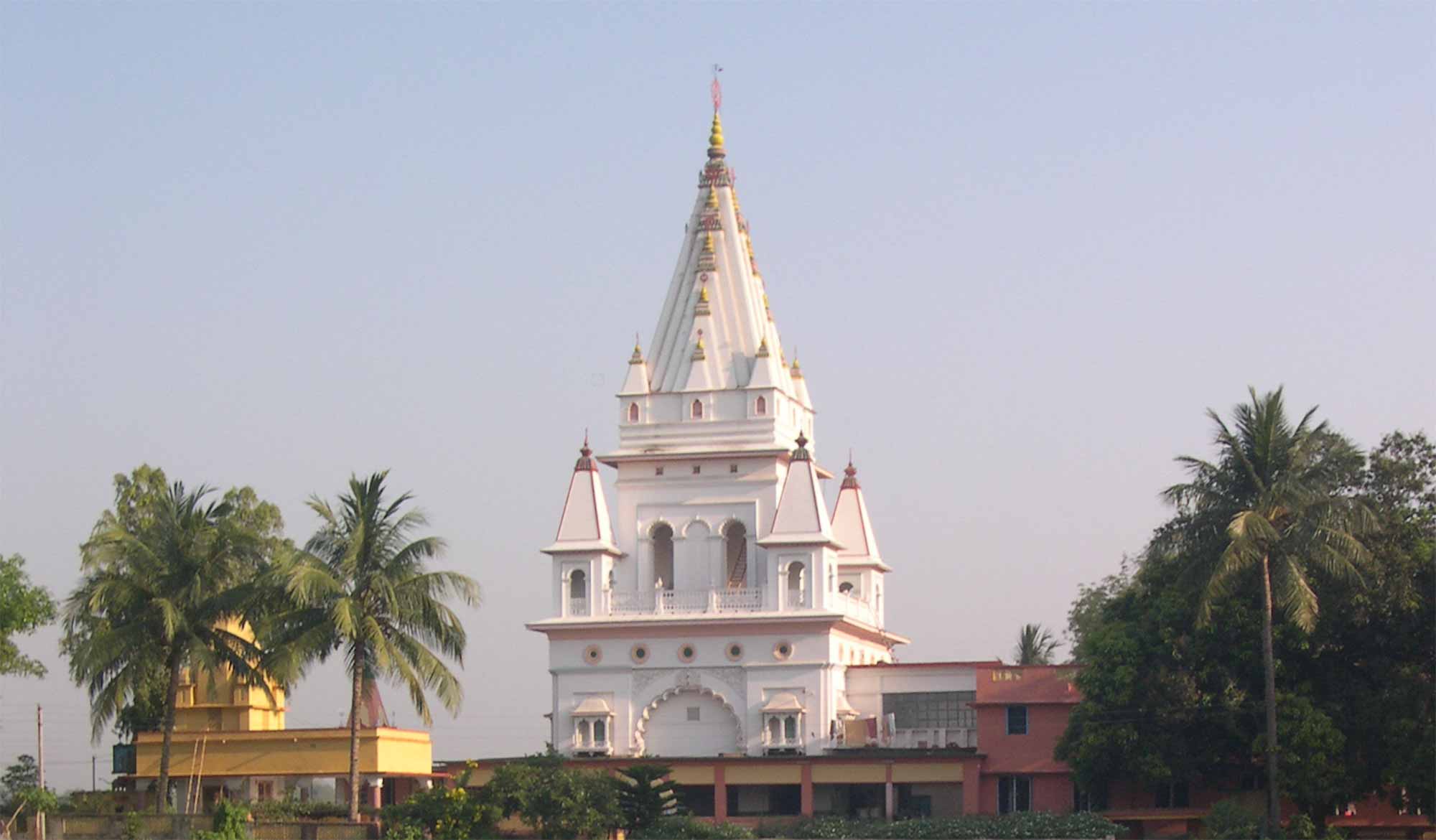by Swami B.G. Narasingha
‘The Vision of Guru’ was written by Swami Narasingha on June 24th 2003. In this article, Narasingha Maharaja explains how disciples should see their guru, how they are eternally grateful to him, and what is the pure conception of Śrī Guru.
Devotee: It has been said that the disciple should see his guru as a direct manifestation of Śrīmatī Rādhārāṇī. Is such actually appropriate?
Narasiṅgha Mahārāja: It is a fact that the higher devotees may have such a vision of guru, but such big words do not look good in the mouth of the neophyte.
In Gauḍīya Vaiṣṇava siddhānta Śrīmatī Rādhārāṇī is the highest conception of guru-tattva but many things are required before we are to come to that stage. If a neophyte devotee speaks such high things, ‘My guru is Rādhārāṇī,’ but such a devotee is lacking in the qualifications of a pure devotee, then the higher conception from his mouth becomes a mockery.
First one should understand that our guru is all in all, he has given us everything for our spiritual advancement. Therefore, we are fully indebted to Śrī Gurudeva. We must feel eternal gratitude toward Śrī Gurudeva. Our Gurudeva has given us the Holy Name of Kṛṣṇa (the highest form of Reality), and the proper conception of chanting the Holy Name.
The Holy Name of Kṛṣṇa is not simply an external sound vibration, internal conception is required, proper conception. The name of Kṛṣṇa chanted by the māyāvādī and the Name of Kṛṣṇa chanted by the Vaiṣṇava are not the same thing. The former is nāma-aparādha, like the milk touched by the lips of a serpent and the latter is as pure as amṛta, eternal nectar.
The māyāvāda conception is that Kṛṣṇa is formless, no features, no activities, no senses etc. and such a conception puts one in the category of a pāṣaṇḍī or an offender to the Supreme Lord.
Śrī Gurudeva has given us the conception that Kṛṣṇa is the supreme proprietor, the supreme enjoyer, and the dearmost friend of all living beings. Śrī Gurudeva imparts to us the conception that we are the eternal servants of Kṛṣṇa and that service to Kṛṣṇa must be performed with full surrender of kaya, mano, vākya or body, mind, and words. Such a conception places us on the threshold of pure devotional service.
Next Śrī Gurudeva gives us the Vaiṣṇava mantras (dīkṣā-mantras) that assist us conceptually in the chanting of the Holy Name and aid us in our internal development, rasa.
Hari-bhakti-vilāsa states that one who is initiated into the Vaiṣṇava mantra and who is devoted to worshipping the Supreme Lord is a Vaiṣṇava. To be accepted as a Vaiṣṇava is indeed no small affair and to discard or neglect the dīkṣā–mantras that Śrī Gurudeva has given us is paramount to spiritual suicide.
It is stated in Gopāla Bhaṭṭa Gosvāmī’s introduction to Sat-Kriyā-Sāra-Dīpikā that one who has given up his dīkṣā–mantras will have to be reinstated (re-initiated) into the status of a Vaiṣṇava:
kevalaṁ śrī-guru-govinda tastad bhāve tat patnyās tad bhāve tat putrāt, tad bhāve satīrtha guru-bhrātus tad bhāve sajātīyānanya śaraṇa sādhutaḥ punaḥ pañca-saṁskāra-pūrvakat śrī bhagavān-nāma-mantra grahaṇaṁ punaḥ saṁskārātiśaya śuddhasya tasya śrī-viṣṇu-pūjanaṁ tannāmādi śravaṇa-kīrtana-smaraṇa-vandanādi pūrvakaṁ mahotsavādikaṁ karṇīyam
“One should again accept Name and mantra from one’s own spiritual master. If the guru is not present (left his body), one should accept from the guru’s wife, son or respected godbrother or from any other pure sādhu having similar qualities. Thus, becoming exceedingly pure by having accepted the pañca-saṁskāras again, he should offer obeisance to and worship Lord Viṣṇu, by fully engaging in hearing, chanting and remembering the Name, form, qualities and pastimes of Lord Viṣṇu.”
Therefore, we should be most attentive to the Holy Name of Kṛṣṇa and to our dīkṣā–mantras, as if they were our very life and soul.
If we think that we have the higher realisation but we do not chant purely and we neglect our dīkṣā–mantras, then we are sure to fall down. Actually if that is our position, we are already fallen.
Next, we should understand how Śrī Gurudeva has placed us in connection with the service of Śrī Caitanya Mahāprabhu and his foremost eternal servants. To enter kṛṣṇa-līlā is very, very difficult. But one who has achieved the service of Śrī Caitanya Mahāprabhu is automatically accepted in kṛṣṇa-līlā. The foremost service to Mahāprabhu is to spread His saṅkīrtana movement (this includes book distribution and all other aspects of the Hare Kṛṣṇa Movement). Not only is such a devotee accepted in kṛṣṇa-līlā but also such a devotee will find that he has been automatically transferred to the service of the lotus feet of Śrīmatī Rādhārāṇī in Vṛndāvana.
yathā yathā gaura-padāravinde vindeta bhaktiṁ kṛta-puṇya-rāśiḥ
tathā tathotsarpati hṛdy akasmād rādhā-padāmbhoja-sudhāmbu-rāśiḥ
“One who is extremely fortunate may get the mercy of Śrī Gaurāṅga. As much as we devote ourselves to the lotus feet of Śrī Gaurāṅga, to that extent we will automatically be able to taste the nectarine service of the lotus feet of Śrīmatī Rādhārāṇī in Vṛndāvana. The more one engages in the service of Lord Gaurāṅga, the more one finds oneself in Vṛndāvana, tasting the nectar of the service of Śrī Rādhā.” (Caitanya-candrāmṛta 88)
Then we must understand and appreciate how Śrī Gurudeva has brought us in connection of the Lord’s associates such as Svarūpa Dāmodara, Rūpa Gosvāmī, Sanātana Gosvāmī, and so forth.
The most intimate associate of Śrī Gaurāṅga in his vipralambha-līlā (pastimes of separation) in Jagannātha Purī is Svarūpa Dāmodara. Svarūpa Dāmodara is Lalitā in kṛṣṇa-līlā, the most favourite friend of Rādhārāṇī. Other than Svarūpa Dāmodara, very few devotees could understand the mind and heart of Śrī Gaurāṅga, especially when the Lord entered deep within the feelings of separation.
Śrī Rūpa Gosvāmī is the mañjarī-gopī in kṛṣṇa-līlā named Rūpa Mañjarī and in gaura-līlā Śrī Rūpa is connected with the innermost feelings of the Lord’s heart through a vicarious relationship. Śrī Rūpa did not live personally with the Lord nor was he present for many of the Lord’s pastimes at Gambhīra, where the Lord manifested extreme feelings of separation for Kṛṣṇa. But Rūpa Gosvāmī was connected to the Lord through the Lord’s instructions and through His service. Thus Śrī Rūpa was able to understand the Lord’s heart when He danced and chanted in front of Lord Jagannātha in a most unusual way. For such, Śrī Rūpa Gosvāmī was appointed as the head of the Gauḍīya sampradāya and authorised to distribute rāgānuga-bhakti, spontaneous love in the mellows of sweet devotion.
Not only are we to understand that Śrī Rūpa is the head of our Gauḍīya sampradāya but also we are to understand that entrance into the Lord’s intimate domain is possible for the jīva only by the same method as shown by Śrī Rūpa, humble submission and strict obedience to the Lord’s instruction while serving in separation. This is our method of rāgānuga–sādhana.
It is an important point to understand that the indirect method of approach is a superior means to the end (dāsa, dāsa, dāsa, dāsānudāsa) and Śrī Gaurāṅga has recommended such a path for all jīvas.
The direct approach to Kṛṣṇa is flawed from the outset because it clashes with the very nature or constitutional position of a jīva. By nature and constitutional position, the jīva requires shelter, āśraya. And this is particularly true when it comes to rasa with Kṛṣṇa. A jīva does not have the capacity to directly associate with Kṛṣṇa in any given rasa and again, particularly in mādhurya-rasa. The jīva requires the shelter and recommendation of the Lord’s pārṣadas, eternal associates. So Mahāprabhu has recommended this method.
gopī bhartuḥ pada-kamalayor dāsa-dāsānudasaḥ
“Our position is that of the servant, of the servant, of the servant, of the followers of the Vaiṣṇavas (gopīs).”
Śrī Sanātana Gosvāmī was the older brother of Śrī Rūpa and he has given us the vaidhi, rules and regulations, in adjustment to the path of rāgānuga-bhakti.
So, Śrī Gurudeva has brought us in connection with these three important personalities in gaura-līlā and by doing so he has increased our good fortune many millions of times. We must gain such appreciation for Śrī Gurudeva before we can understand his highest status.
If we have not understood all these matters concerning Śrī Gurudeva then we have not actually understood what he is or what he represents. Simply shouting “Jaya Gurudeva” with no proper understanding is only giving lip-deep service.
Then we are to appreciate that Śrī Gurudeva has brought us in connection with the most holy of holy places, Śrī Mathurā-maṇḍala, the residents of the dhāma, Śrī Rādhā-kuṇḍa, Śrī Giri-Govardhana and lastly Śrī Gurudeva has placed within us the great hope that one day we will get the divine service of Śrī Śrī Rādhikā-Mādhava-sundara in Their eternal abode.
Raghunātha Dāsa Gosvāmī has said in his prayer that he has received all these things from Śrī Gurudeva and so he bows his head with all respect at the lotus feet of Śrī Guru.
nāma-śreṣṭhaṁ manum api śacī-putram atra svarūpaṁ
rūpaṁ tasyāgrajam uru-purīṁ māthurīṁ goṣṭha-vāṭīm
rādha-kuṇḍaṁ giri-varam aho rādhikā-mādhavāśāṁ
prāpto yasya prathita-kṛpayā śrī-guruṁ taṁ nato ’smi
Later on, in the absence of Śrī Gurudeva, Dāsa Gosvāmī has said that the world is empty and vacant, he says that without the presence of Śrī Gurudeva the great Govardhana Hill seems like a big python coming to devour him. And Rādhā-kuṇḍa, the holiest place on Earth, seems like the gaping mouth of a ferocious tiger.
śūnyāyate mahā-goṣṭhaṁ girīndro ‘jagarāyate
vyāghra-tuṇḍāyate kuṇḍaṁ jīvātu-rahitasya me
“Now that I do not have the association of the sustainer of my life (Śrī Rūpa), Vraja seems completely empty and desolate, Govardhana Hill seems like a huge python and even Śrī Rādhā-kuṇḍa seems to be like the gaping mouth of a ferocious tiger.” (Śrī Prārthanāśraya Caturdaśakam, Verse 11)
Śrīla B. R. Śrīdhara Mahārāja has commented that such a feeling of separation as felt by Raghunātha Dāsa Gosvāmī will naturally come into the heart of a sincere disciple who experiences separation from Śrī Gurudeva.
So before we make much of boasting and declare that our Gurudeva is Śrīmatī Rādhārāṇī we should first try to follow in the footsteps of Raghunātha Dāsa Gosvāmī, our prayojana-ācārya, and appreciate the proper conception of Śrī Gurudeva beginning from the first step and gradually, with proper qualification, come to the ultimate realisation.
More Articles by Swami B.G. Narasingha
Jīvas and the Marginal Plane
“Jīvas and the Marginal Plane” was written in January 2005 by Śrīla B.G. Narasiṅgha Mahārāja, in response to a question concerning the ‘fall’ of the jīva, as explained in the GBC book ‘Our Original Position’ (OOPs). Narasiṅgha Mahārāja gives many quotes from the previous ācāryas to show how the misconception of the jīva’s ‘fall’ is erroneous.
The Colour for Sannyāsīs
In this short article, ‘The Colour for Sannyāsīs’ from December 2010, Śrīla Narasiṅgha Mahārāja describes the original colour of the cloth used by sannyāsīs in the line of Sarasvatī Ṭhākura and how in modern times, this has become obsolete.
The Adbhūta Mandira and Bhaktivinoda’s Vision
In ‘The Adbhūta Mandira and Bhaktvinoda’s Vision’ written in 2005, Śrīla Narasiṅgha Mahārāja gives a detailed narration of how Bhaktivinoda Ṭhākura discovered the Yogapīṭha, the birthplace of Śrī Caitanya. He gives compelling arguments as to why the Yogapīṭha Temple is the actual Adbhūta Mandira predicted by Nityānanda Prabhu, as opposed to the new temple being built by ISKCON.

